Back again with another fish from Takara, from yet another series. This one is the electric eel Electrophorus electricus (probably…a few species were separated from E. electricus in 2019, but this is the most likely species for the figure based on appearance and general familiarity). As the set name implies, it featured animals that shared the characteristic of being dangerous (to people). Other than that…not much else was shared (the other figures were a box jelly and two tiger variants). Clearly, each animal represented bore a specific type of danger, with the electric eel obviously being chose for its infamous ability to use massive amounts of self-generated electricity.

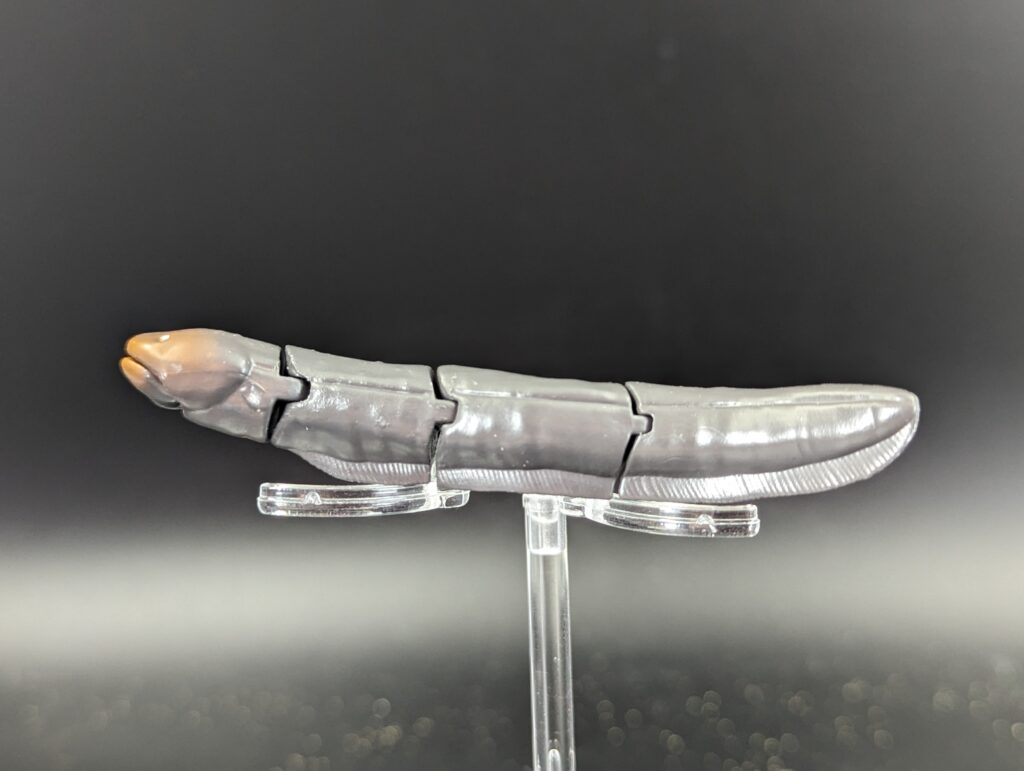
Although not the only electric fish, the electric eels stand out as the most powerful. E. electricus is able to generate various levels of electricity from three different electric-generating organs; the most powerful can be up to 480 Volts–more than enough to be lethal, but actually the lowest of the the three Electrophorous species (E. voltai can reach up to 860V!) But these fish don’t only use electricity to kill prey (or people that aren’t paying attention in their murky habitats). The different organs can also generate electric impulses that allow for general electolocation in their environment, communication, navigation, and locating prey, all of which utilize different organs and voltages from the main high-discharge stun/kill charges.


The ability to use electricity to sense their surroundings is probably the most prominent feature of the entire clade that includes the electric eel, the Gymnotiformes or South American knifefish. Despite the name ‘eel’ these fish are not all that closely related to true eels, instead being part of a larger group of fish that includes catfish (which includes its own family of electric fish), milkfish, characins (like piranhas and tetras), and cyprinids (minnows, carp, etc). As a group, gymnotiformes have longer bodies, often laterally compressed but more cylindrical in electric eels. There are no dorsal fins or pelvic fins, but they do have pectoral fins as well as a very extensive anal fin that undulates, allowing them to change direction. The much more muscular body of electric eels also lets them bend and be otherwise less stiff.
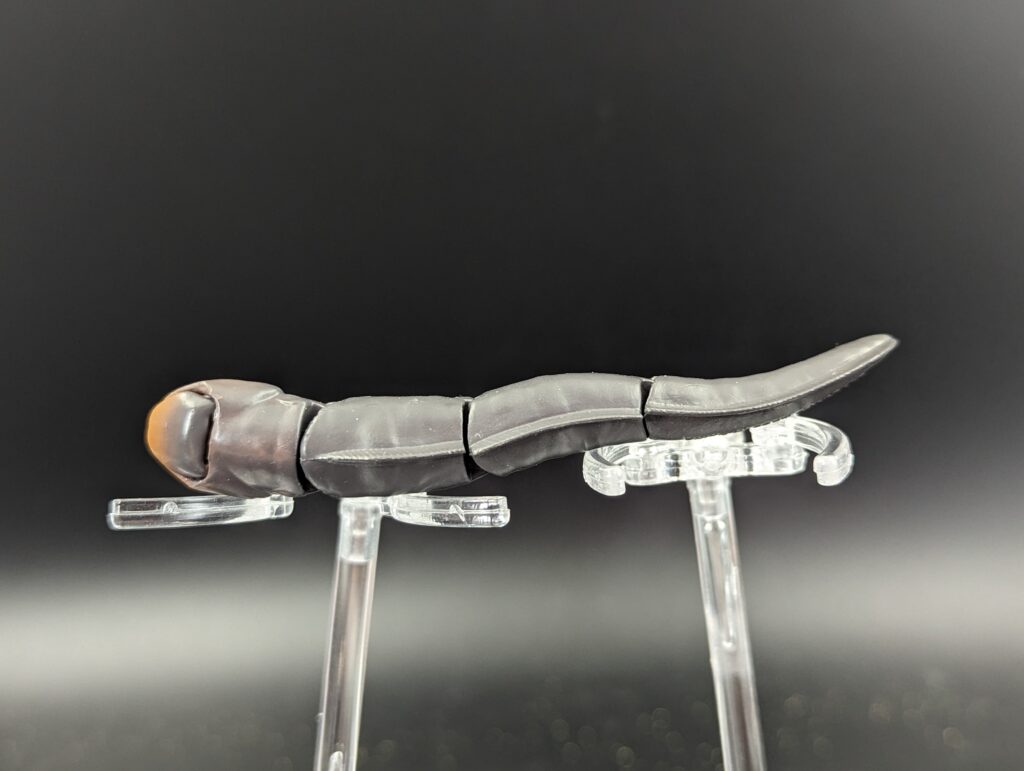
The practicality of the electrical senses of these fishes suits them well in their native habitats in South America. Although often referred to as ‘Amazonian’ fish, when the species were delineated, their ranges were found to have little to no overlap E. electricus is limited to the northeastern region of South America, in what is referred to as the Guiana Shield. They are exclusively freshwater fishes, preferring heavily shaded muddy river bottoms and swamps; electric eels are obligate air breathers, so the low oxygen levels of these environments do not bother them. Between the murky environments and their nocturnal behaviour electric eels don’t rely much on eyesight, but with the ability to orient themselves and sense their surrounding with low electric charges, they are able to hunt incredibly effectively.
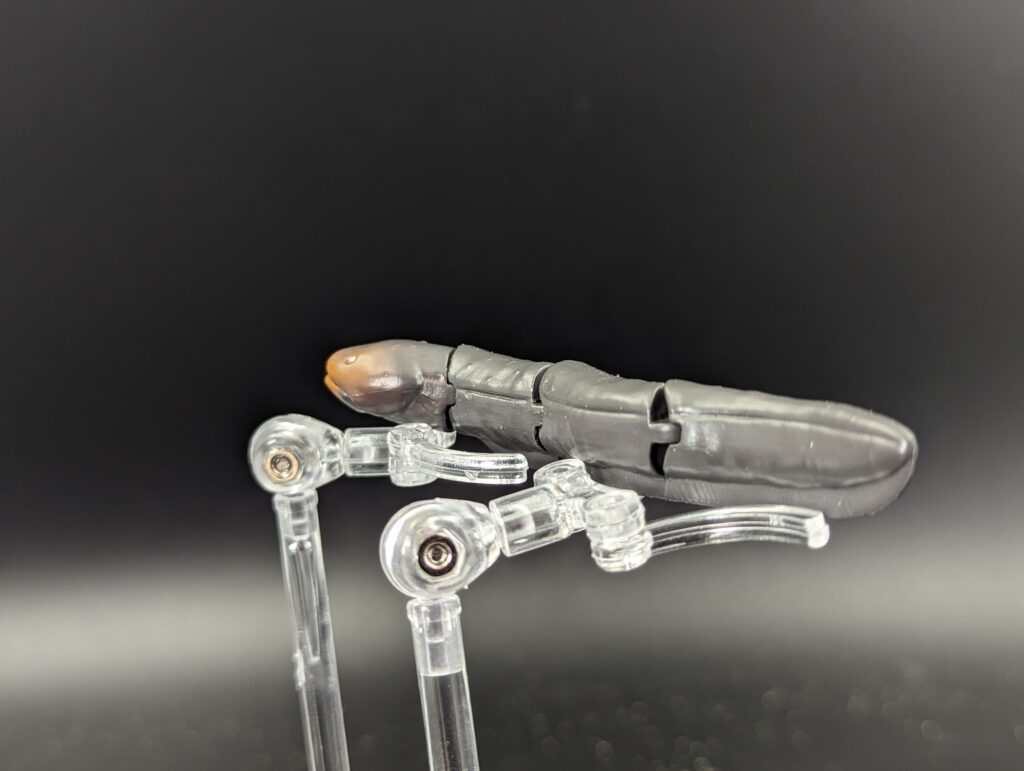
The usual prey varies among the species, although fish are the most common; mammals, invertebrates and even toxic caecilians can also be taken. They are also big fish, growing up to 2 metres (6.5 feet) long, with males being larger. The different species exhibit at least some form of parental care of young. And yes…they can kill people if they feel threatened, often due to accidental encounters in murky habitats or small bodies of water. But they also make neat public aquarium displays, lighting up bulbs, etc to the delight of visitors (for as many as 20 years)!

The figure itself is about 9.4 cm long, giving a scale of about 1:21; this could put it in scale with a number of modern animal figures, depending on the maker (1:20 or thereabouts is fairly common for mammals, for example). The overall body is a uniform dusky grey. The only other colour is a dark yellow or orange ochre across the face, head and lower jaw. This colour should probably extend a little further back along the throat, past the opercula and onto the pectoral fins, but it is variable in individuals. The The eyes are small and recessed on the head, picked out as white dots; there should be a dark ‘pupil’ but it is not present. The inside of the lower jaw is painted as a bright pink tongue, but they did miss out on the opportunity to sculpt in the highly vascularized folded tissue that would be seen on the roof of the mouth.
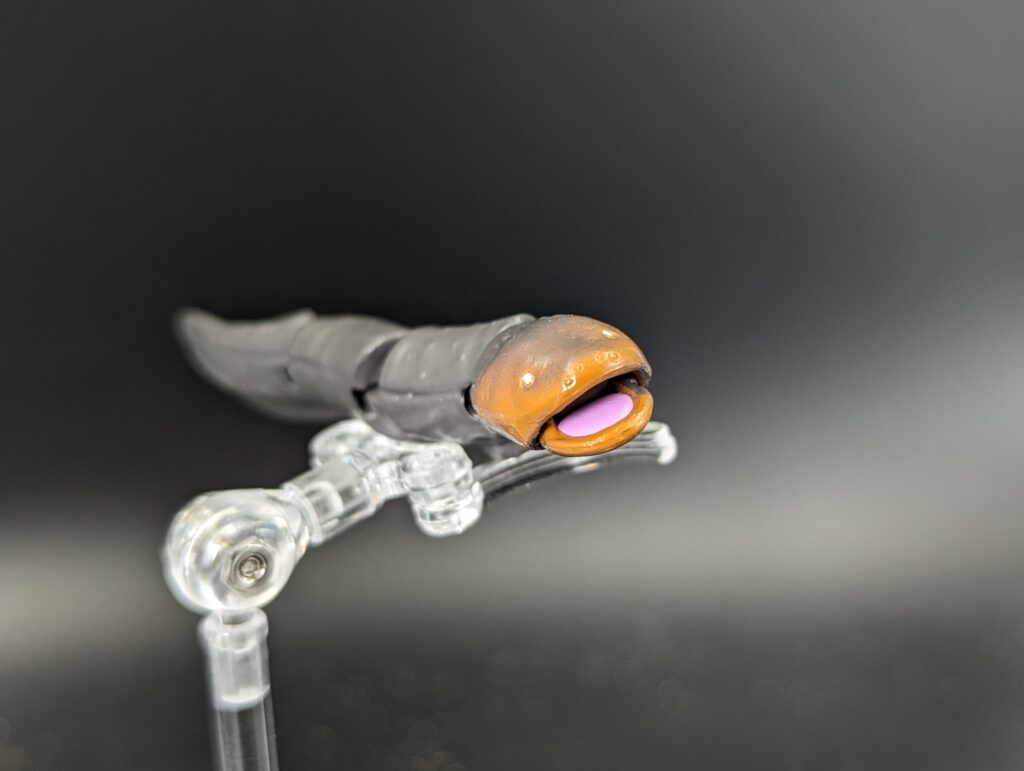

In terms of sculpt, the features are there–the body is quite stocky, which is appropriate. There is a shallow line extending down the body, about 1/3 the distance from the dorsal margin; I think this might be meant to indicate the lateral line, although I’m not sure–it seems to be variably visible in photographs, and even shallower than in the figure. The dorsal surface appears to covered in a number of random tubercles…this is odd, and not seen in the real animal; if anything, these should actually be pores, part of the fish’s electroreception apparatus (kind of an odd miss here). The pectoral fins are sculpted against the body and appear a little small and indistinct. The anal fins is depicted with numerous fin rays and correctly long, extending along the bottom of the figure from the front of the second piece, ending at the tail. There is very little undulation in the fin, which makes it difficult to ‘stand’ the figure, as it forms a thin edge along the majority of the body. This can be adjusted by taking advantage of the articulation of the figure–as with most of these Takara sets, the figure is in multiple pieces, but it does come across as a little simple with an animal like the electric eel.
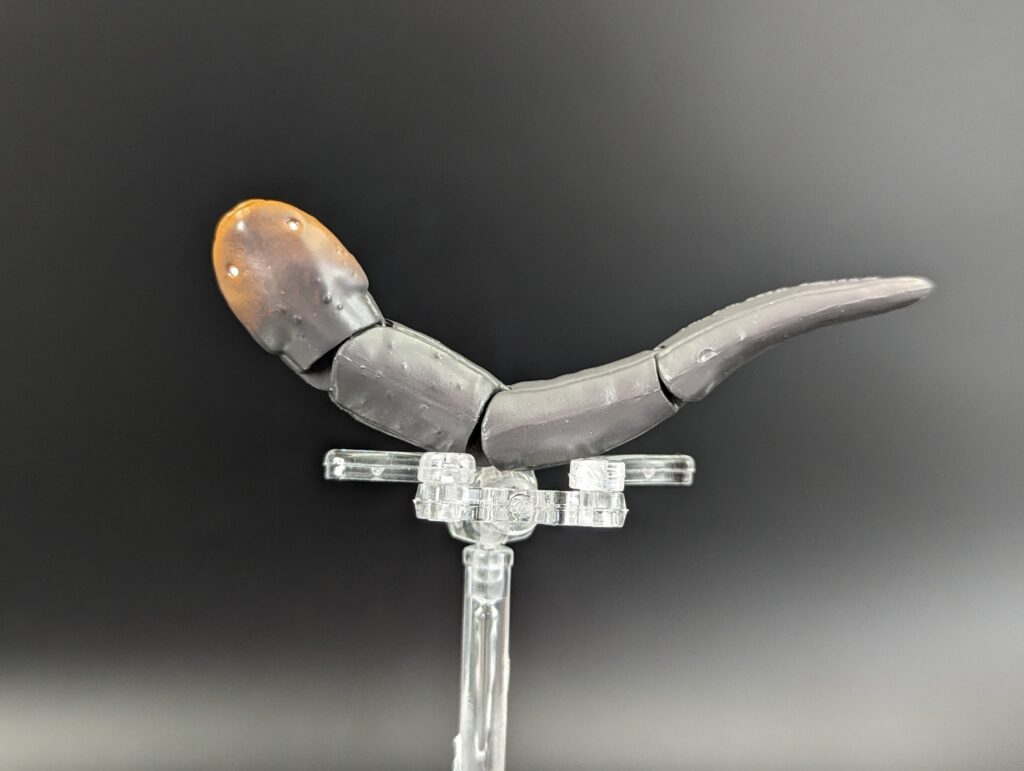
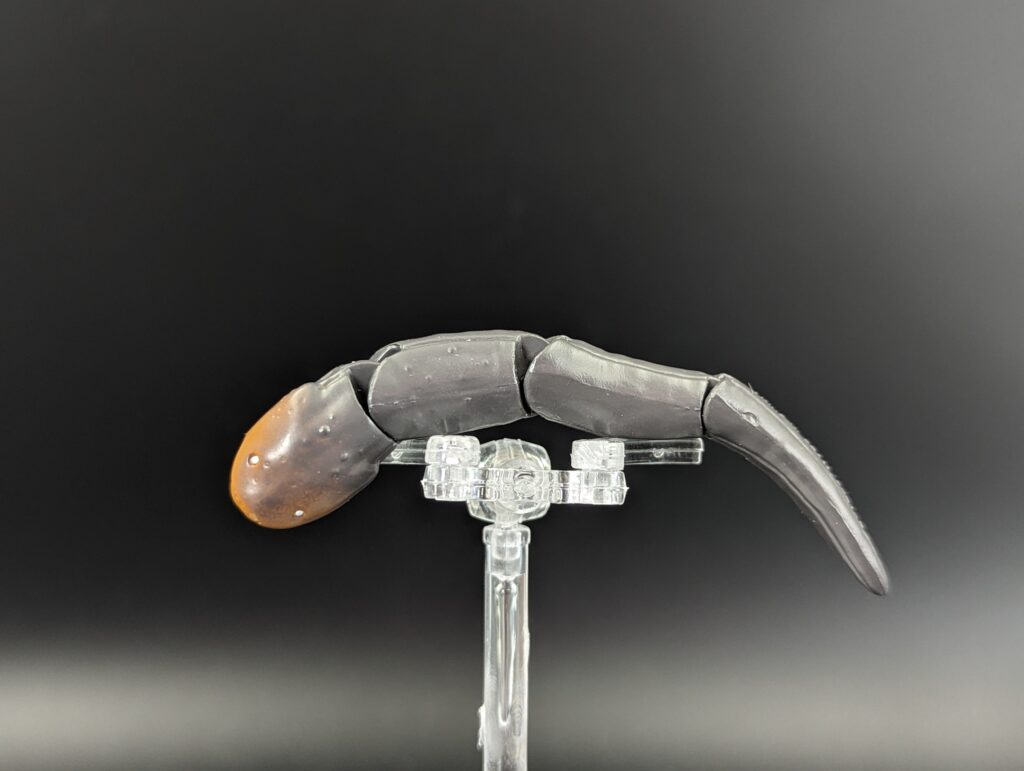
There are five pieces in total, the head and separate (articulating) lower jaw, a short body piece, a longer body piece, and the tail piece. Unlike the Takara Kidako moray the inner pieces must fit in specific order, with the shorter piece in front of the longer piece. When placed all together, the figure has a slight undulating curve to it, but seems to flow most naturally with some bends at the joints. For collectors that are not fans of jointed figures, I think the Takara would not suit their preference–the joints are quite large and noticeable. And as I’ve mentioned, getting the figure to ‘stand’ is a challenge, since the curve radii is pretty limited, and the anal fin gives only a thin ridge along the ground. This may be clear from the lengths I sometimes had to go to for the photographs!

I am pretty forgiving, but this does frustrate me a little (plus the odd choice of tubercles instead of pores!) On the other hand, electric eel figures are surprisingly uncommon, given their notoriety. There are some plushes out there, and a very nice figure from Kaiyodo as part of their aquarium bottlecap series but it’s pretty hard to find now. And I think there are a few metal game pieces out in the world that might at least by a gymnotiform if not an electric eel, but they’d be tiny. So for those looking to enhance their freshwater fish, this one is probably your best be right now, but let’s hope we see others in the near future!
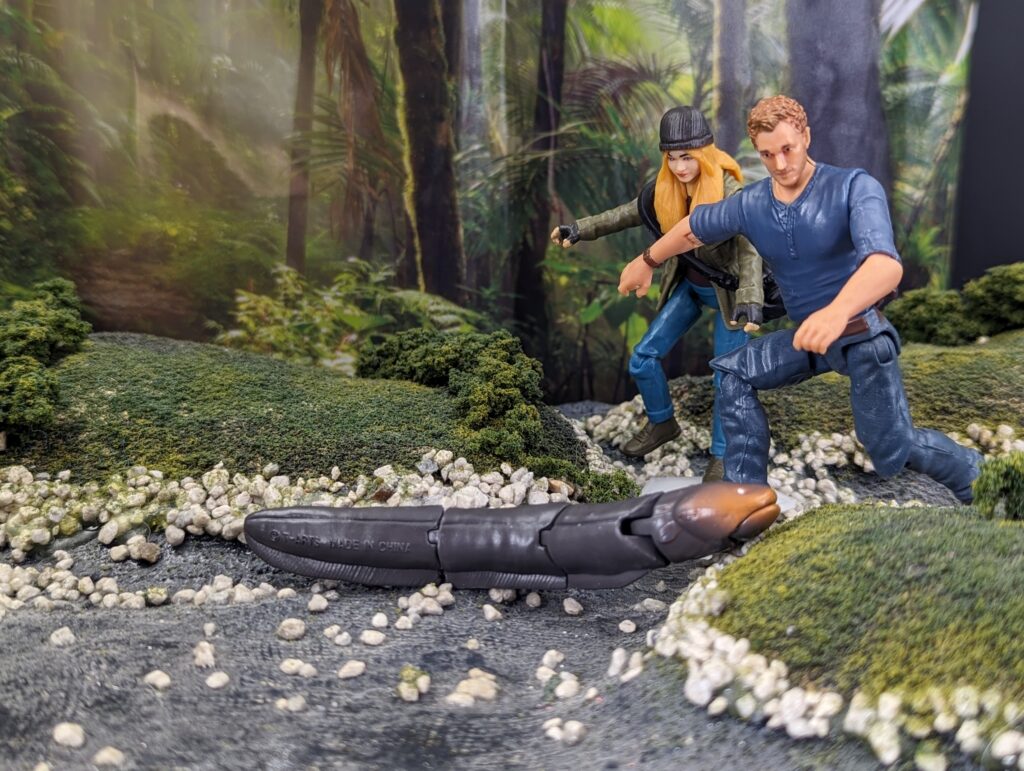
Disclaimer: links to Ebay and Amazon on the AnimalToyBlog are affiliate links, so we make a small commission if you use them. Thanks for supporting us!




I really want an electric eel in my collection (at a reasonable size) but the articulations here are just way too overpowering for me, unfortunately.
Great review, though, as always!
Thanks. You can always track down the Kaiyodo Aquatales (series 5?) one! Much smaller of course, but well made.